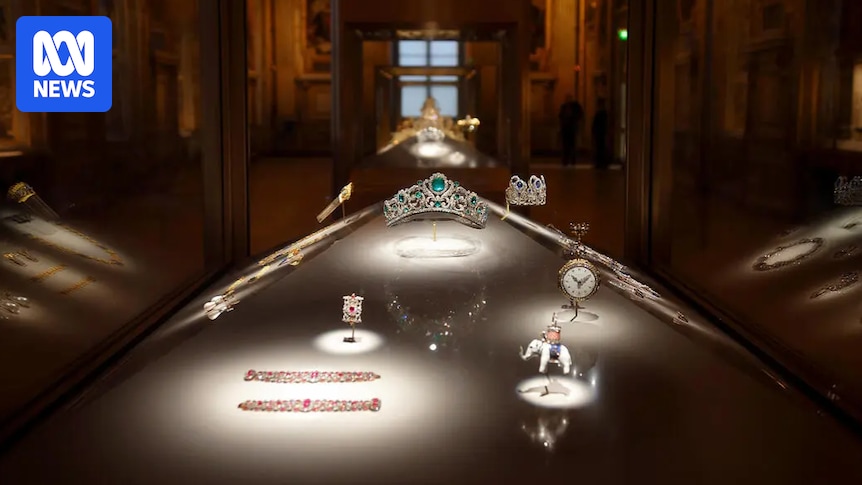
INTERPOL has issued a worldwide alert following the audacious theft of “priceless” royal jewels from the Louvre museum in Paris, a heist that has left French authorities scrambling. Valued at an estimated 88 million euros ($157 million), these jewels represent a significant cultural loss, and French President Emmanuel Macron has vowed that the works will be recovered.
The international criminal police organization has distributed a “special edition poster” to its member countries, featuring images of the stolen relics. These jewels, which include crowns once worn by France’s last queen, Marie-Amelie, and its last empress, Eugenie, are now part of INTERPOL’s Stolen Works of Art database, a crucial step in preventing their sale on the black market.
The Heist: A Brazen Operation
The theft occurred on Sunday, with thieves executing a daring plan that involved using a “mechanical ladder mounted on a vehicle” to gain access to the Louvre’s Gallery of Apollo. According to INTERPOL, the thieves cut through display cases and made off with the jewels, which are encrusted with thousands of diamonds and precious gemstones.
In a dramatic turn of events, a crown belonging to Empress Eugenie was recovered at the scene, apparently dropped by the intruders. The thieves reportedly fled on scooters after museum staff thwarted their attempt to set fire to their vehicle outside.
Expert Opinions and Concerns
French public prosecutor Laure Beccuau has expressed concern over the potential fate of the jewels, emphasizing their immense value to dissuade the thieves from melting them down for quick profit. “We can maybe hope that [the perpetrators] think about it and won’t destroy these jewels for no reason,” she stated.
Art theft experts, however, remain skeptical about the jewels’ recovery. The listing of the items in INTERPOL’s database, which includes over 57,000 stolen artworks, is seen as a critical deterrent against their immediate sale. Yet, the fear persists that the jewels may never be seen again.
Historical Significance and Cultural Loss
The stolen jewels are not just valuable in monetary terms; they hold significant historical and cultural importance. Originating from France’s 19th-century royalty, these items are a testament to the country’s imperial past. Their theft represents a profound cultural loss, echoing past art heists that have left similar voids in the art world.
Such incidents bring to mind the infamous 1990 Isabella Stewart Gardner Museum heist in Boston, where masterpieces valued at over $500 million remain missing to this day. The Louvre theft underscores the ongoing challenges faced by museums worldwide in safeguarding their collections against increasingly sophisticated criminal operations.
Future Implications and Recovery Efforts
As the investigation unfolds, French authorities are determined to recover the stolen jewels. President Macron’s commitment to retrieving the works reflects the broader national sentiment towards preserving France’s cultural heritage. However, the road to recovery may be fraught with challenges, as history has shown with similar high-profile art thefts.
Meanwhile, the international art community remains on high alert, with museums and collectors urged to exercise heightened vigilance. The Louvre heist serves as a stark reminder of the vulnerabilities inherent in the art world and the need for continued collaboration among international law enforcement agencies to combat art crime.
As the story develops, the world watches closely, hoping for a resolution that sees these priceless treasures returned to their rightful place.






